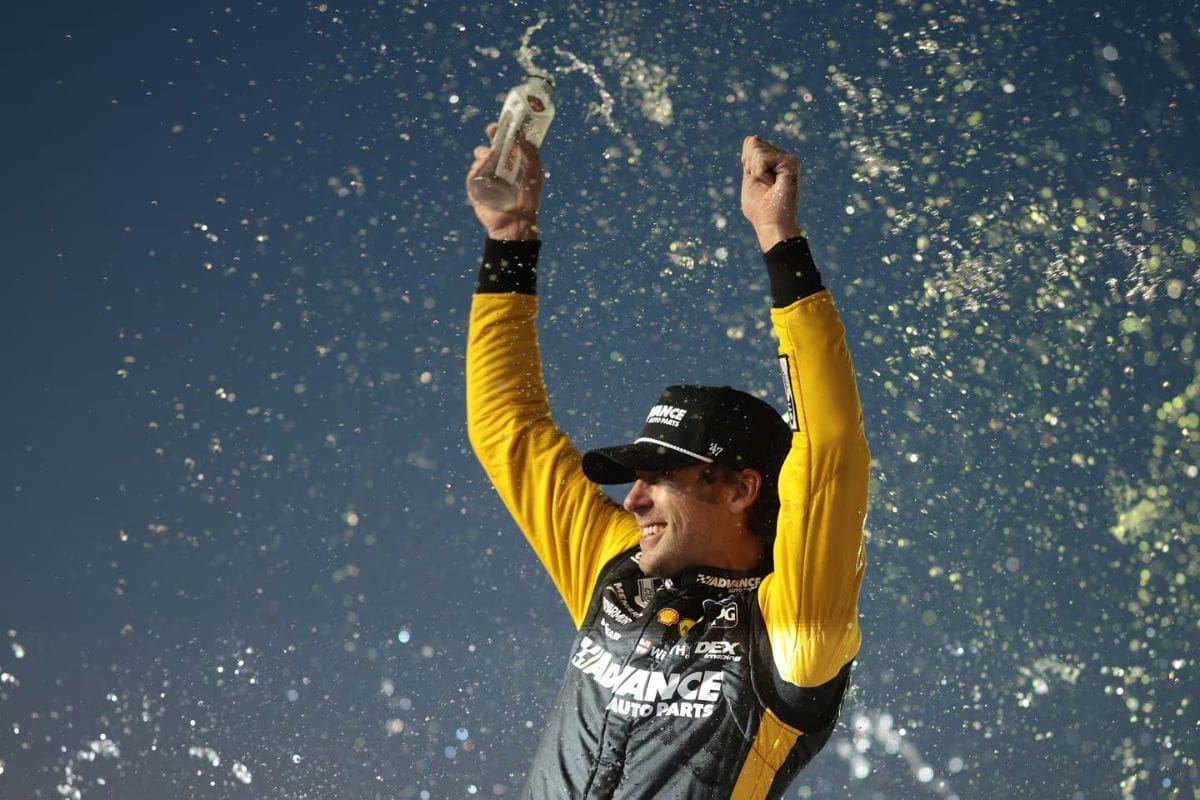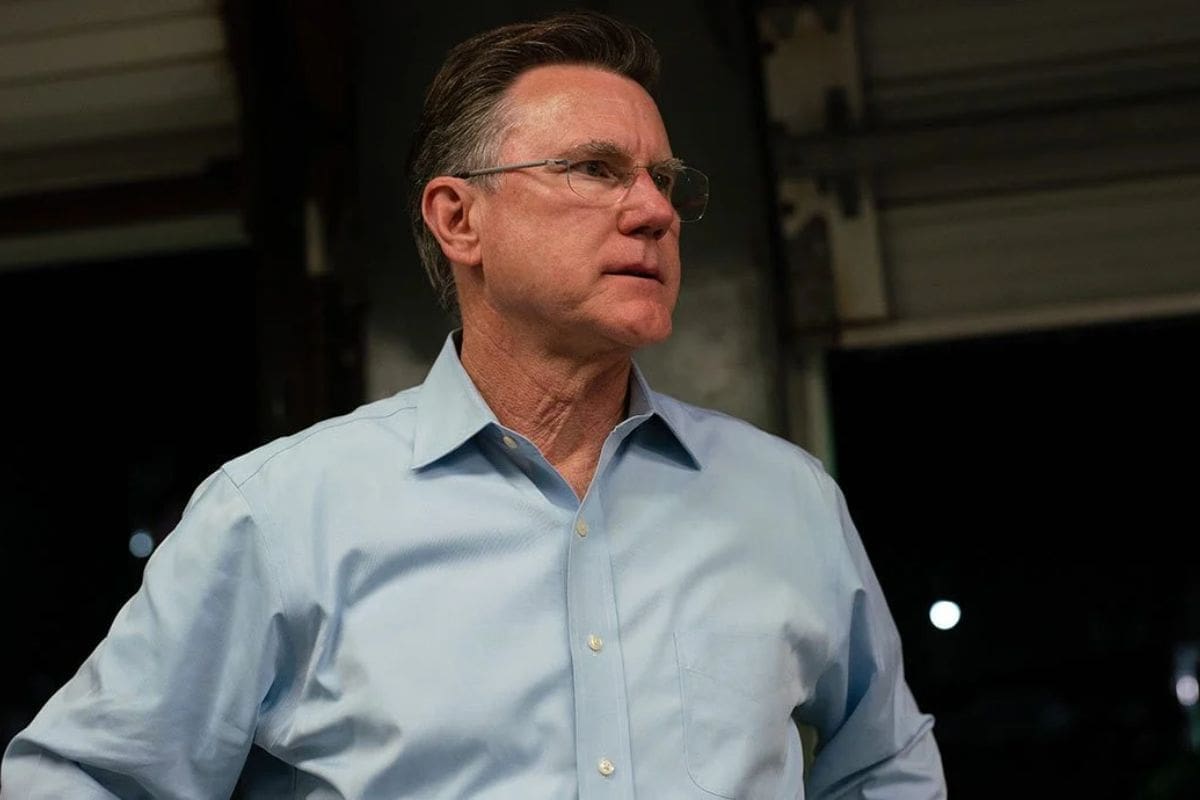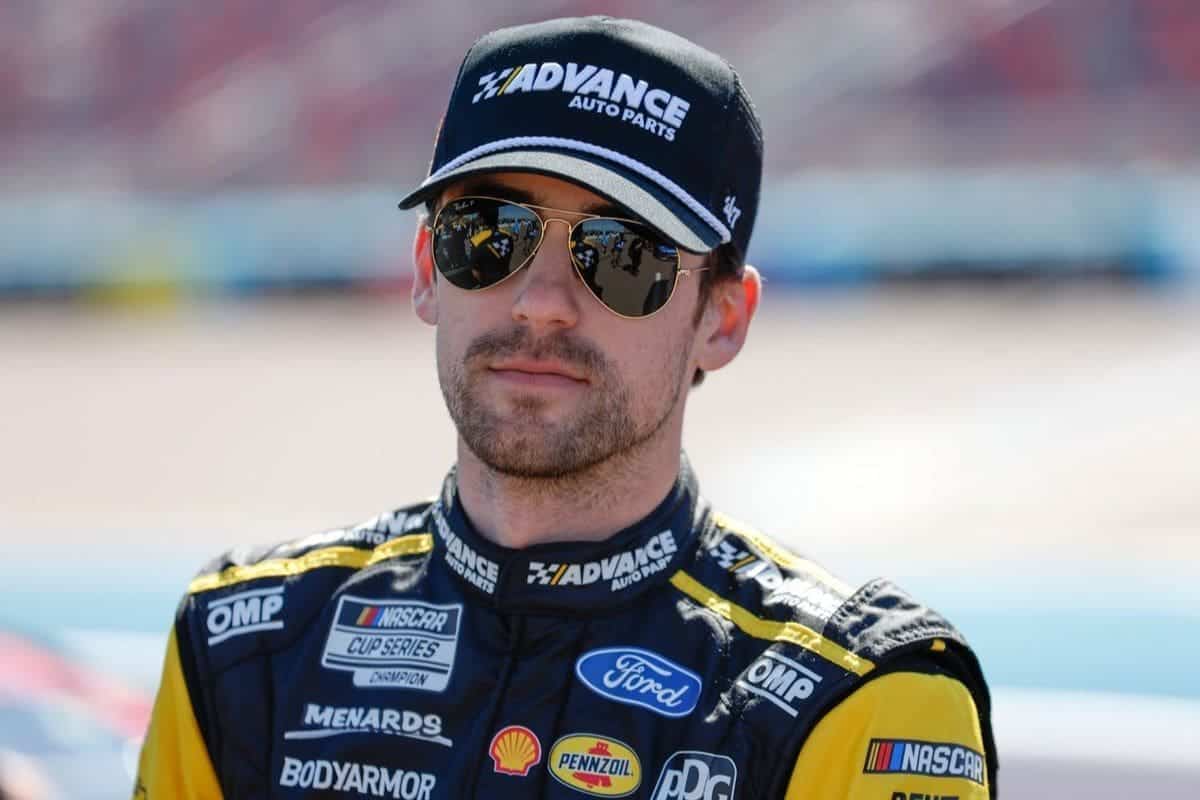Elton Sawyer Discusses Iowa Track Repavement: In the wake of Ryan Blaney‘s historic victory at the Iowa Corn 350 Cup race, Elton Sawyer, NASCAR’s Vice President of Officiating and Technical Inspection, provided an in-depth analysis of the Iowa Speedway’s recent partial repaving. Emphasizing the critical role of safety and the necessity for ongoing investments, Sawyer’s insights reveal the complexities behind maintaining a balance between competitive racing and stringent safety standards. Yet, the conversation extends beyond immediate improvements, hinting at broader implications for NASCAR’s strategic involvement in future track developments. What does this mean for the future trajectory of Iowa Speedway and its place in the NASCAR circuit?
Key Highlights
- Elton Sawyer emphasized the safety improvements brought by the partial re-pavement of Iowa Speedway.
- Sawyer highlighted NASCAR’s methodical and data-driven approach to future track enhancements.
- He acknowledged the challenges and disruptions involved in the re-pavement process.
- Sawyer stressed the importance of balancing short-term benefits with long-term gains in track improvements.
- He affirmed NASCAR’s role in ensuring track safety and quality of racing events.
Ryan Blaney’s Historic Victory
In a defining moment for his career, Ryan Blaney’s victory in the inaugural Iowa Corn 350 Cup race at Iowa Speedway not only highlighted his exceptional skill but also solidified his legacy as the initial driver to secure wins across all three NASCAR national series at this challenging venue. The 0.875-mile oval, known for its unique blend of short-track intensity and intermediate-track speed, provided the perfect stage for Blaney’s demonstration of versatility and strategic insight.
Blaney’s win was not merely a confirmation of his driving abilities but also of his capacity to adapt and excel across varied conditions and formats. The Iowa Corn 350 was a race that demanded precision, patience, and a deep understanding of both vehicle dynamics and track characteristics. Blaney’s mastery of these elements was evident throughout the event as he navigated the complexities of tire management, pit strategy, and in-race adjustments with the finesse of a seasoned champion.
Track Preparation and Social Media Buzz
The partial repaving of Iowa Speedway’s surface, particularly in two of the three lanes, has sparked noteworthy discussion and anticipation on social media, as fans and analysts both speculate on the impact this might have on the race dynamics. The decision to revamp select portions of the track, mainly in the turns, has created a rich ground for discourse, driven by the inherent unpredictability of how the new asphalt will interact with the existing layout.
Images of the upgraded sections quickly circulated online, triggering a wave of analyses and predictions. Enthusiasts and experts both debated whether the fresh pavement would lead to increased tire wear or offer improved grip, thereby altering the established racing lines. The contrast of the old versus new surfaces also brought forth questions regarding the potential for multi-groove racing, an aspect that could significantly influence overtaking and race strategies.
From a technical standpoint, the partial repaving can be viewed as a strategic move by NASCAR to maintain the track’s competitiveness without resorting to a full-scale overhaul. This approach allows for a period of adjustment where drivers and teams must quickly adapt to the mixed conditions, adding a layer of complexity to their race preparation. The subtle changes in the track surface could necessitate recalibrations in car setup, tire management, and driver tactics.
Race Day Surprises and Multi-Groove Racing
Race day at Iowa Speedway defied expectations as the partially repaved track facilitated thrilling multi-groove racing, highlighting the dynamic adaptability of both drivers and their teams.
The repaving, which had to be completed hastily due to the deteriorating condition of the turns, introduced an unexpected variable that many anticipated would limit racing lines. Instead, it provided an unprecedented platform for side-by-side action, showcasing the importance of strategic versatility and technical expertise.
🤔 "A lot of questions to answer on that."#NASCAR's Elton Sawyer addressed the potential of a full repave for @iowaspeedway.
More ▶️ https://t.co/WGRTG5gVtL pic.twitter.com/OYjfxFtwXU
— SiriusXM NASCAR Radio (Ch. 90) (@SiriusXMNASCAR) June 18, 2024
NASCAR Senior Vice President Elton Sawyer noted that the intention was to preserve as much of the original asphalt as possible. However, the necessity to repave the turns to guarantee safety introduced a complex dynamic to the race conditions.
“Now we sit here on Tuesday afterwards and we had great racing. We had side-by-side, we had two lanes. So, I’m sure we’ll have a lot of dialogue around if we go back, do you repave the whole facility? Do you just repave that third lane up by the wall?” -Sawyer
Drivers quickly adapted to the new surface, utilizing both high and low lines effectively. This adaptability was critical, as it allowed for increased overtaking opportunities, transforming what could have been a single-groove procession into an electrifying display of competitive racing.
Crew chiefs and engineers had to rapidly comprehend the intricacies of the repaved sections, optimizing car setups to exploit the dual-lane potential. This adaptability was evident in the race’s outcome, with numerous position changes and strategic maneuvers keeping spectators on the edge of their seats.
Discussions on Future Repaving
Considerations regarding the future repaving of Iowa Speedway have sparked insightful discussions among NASCAR officials, focusing on the delicate balance between improving racing conditions and preserving the track’s unique characteristics.
The strategic dialogue revolves around whether to undertake a thorough repaving of the entire facility or to focus specifically on the third lane near the wall, an area that has seen notable wear and tear.
Elton Sawyer, a key voice in these discussions, emphasized the need to maintain the track’s multi-groove racing appeal, an attribute that contributes significantly to the competitive nature of events held at Iowa Speedway.
“A lot of questions to answer on that, but I think the No. 1 thing is we had really, really good racing this past weekend. No matter what we do, we need to make sure that we’re either heading in a positive direction to make the racing better, or to leave it as is and have another data point out there next year.” – Sawyer
The decision to repave is not solely about restoring the surface but about ensuring that any modifications align with the overall goals of improving the racing experience without sacrificing the unique dynamics that define the track.
A complete repave could provide a smoother, more consistent racing surface, potentially leading to higher speeds and improved safety. However, it also carries the risk of altering the track’s character, which has been a crucial factor in its popularity among drivers and fans.
Conversely, repaving just the outermost lane could address the immediate concerns of track wear while preserving the existing surface conditions that contribute to the multi-groove racing.
Ryan Blaney’s Perspective and Victory Comments
Ryan Blaney’s thoughtful reflections on his recent victory at Iowa Speedway highlight a detailed perspective on the track’s current state and the potential implications of a full repave. Blaney’s insights reveal a balance between acknowledging the track’s current strengths and recognizing the authority of NASCAR officials in making final decisions on any repaving efforts.
Blaney highlighted the track’s ability to support dynamic racing, which is a confirmation of its current condition. He noted that the track could comfortably accommodate up to three cars within the bottom two lanes, which greatly improves overtaking opportunities. This characteristic is vital for maintaining competitive and engaging races, suggesting that the existing surface still offers significant raceability.
“I thought it actually raced pretty good. I don’t know how it looked on TV to everybody. Good? I thought it was pretty racy. We were way up there in that second lane, which essentially made it three lanes. You had the bottom, could straddle the seam, then you had guys in the full top.” – Blaney
However, Blaney’s comments also reflect a measured approach. While he praised the track’s performance, he expressed uncertainty about the necessity of a full repave. His perspective is rooted in the understanding that while the track is currently functional, the ultimate decision on repaving should rest with NASCAR officials, who have the broader context and expertise to assess the long-term needs of the venue.
“I don’t know if they really need to pave the whole thing. I thought it did a good job tonight. But that’s above my pay grade.” – Blaney
Blaney’s satisfaction with the race’s outcome further emphasizes his balanced view. His victory at Iowa Speedway serves as a practical endorsement of the track’s current state, while his deference to NASCAR officials on future improvements indicates a respect for the systematic evaluation process.
News in Brief: Elton Sawyer Discusses Iowa Track Repavement
The Iowa Corn 350 Cup race, marked by Ryan Blaney’s historic victory, highlights the critical interplay between track conditions and competitive performance.
Elton Sawyer’s insights into the partial repaving of Iowa Speedway emphasize the importance of ongoing investments to balance safety and racing quality.
Future repaving efforts, while potentially disruptive, are crucial for maintaining the track’s integrity and enhancing the spectator experience as a whole.
Blaney’s success serves as proof of the successful implementation of these strategic improvements.
ALSO READ: Elton Sawyer Admits Ignorance in Coca-Cola 600 Washout



